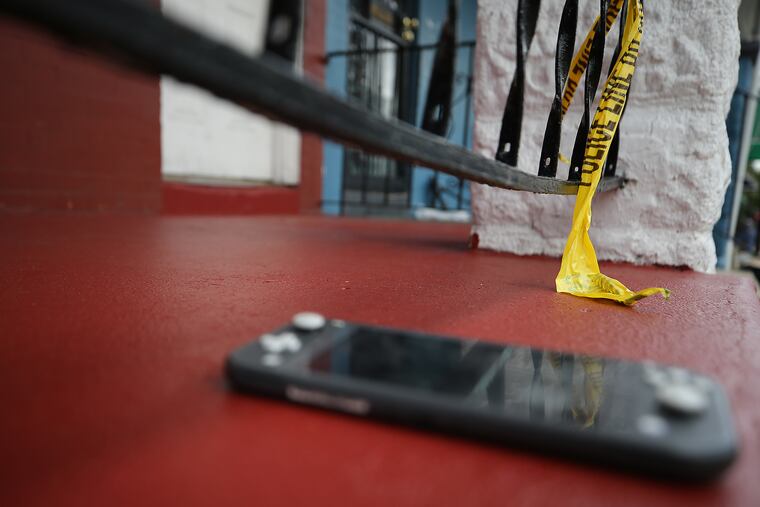As gun violence increases, Philly’s latest strategy could stop the bleeding — but only if done carefully | Editorial
Public accountability will be the key to success for the city's latest gun violence initiative.

Philadelphia is bleeding.
Over the last weekend, more than 25 people were shot in Philadelphia — including two 11-year-olds. Nearly 1,150 people have been shot in Philadelphia this year, a 36% increase compared with this far along in 2019. Among the victims are more than 100 children.
Homicides and shootings have been increasing since 2015, and the city has struggled to curb the trend. Millions spent for community groups and the Community Crisis Intervention Program that deploys violence interrupters, alongside more than $700 million a year in the Police Department budget, has not stopped the bleeding.
The latest effort, Group Violence Intervention (GVI), launched in early August. In planning since last summer, GVI is a rebrand of the Focused Deterrence model that has been credited with significant drops in gun violence — including the “Boston Miracle” of the ’90s and a 35% reduction in gun violence in South Philadelphia in 2013-14.
The approach is based on two underlying assumptions: that the majority of gun violence is driven by a small group of individuals who are connected to one another, and that there is no legal consequence to the majority of shootings. Both of these are true in Philadelphia. A Philadelphia Police Department analysis found that 80% of shootings inside crime “hot spots” are committed by 2% of known offenders. In addition, police data show that in 2019 only 1 in 5 nonfatal shootings led to an arrest.
A small group of some of the most vulnerable people in Philadelphia are engaging in violence with an assumption of impunity, while children are caught in the cross fire.
To change the group dynamics, GVI reaches out to members of groups engaged in violence and informs them that the shooting must stop. If the shooting doesn’t stop, the system will find legal levers to pull against them, for example closer monitoring for probation violations.
To help the individuals who choose to transition out of violence, GVI offers social services. The assistance can be in job training or GED classes, but also smaller forms of support like buying groceries and diapers.
» READ MORE: Important lessons for Philadelphia from Chicago’s three-year decline in gun violence | Editorial
The launch of GVI was delayed for months due to COVID-19. And while the pandemic did make some elements of the effort logistically more difficult — traditionally the “stop the shooting” message is shared to multiple high-risk individuals in a group meeting — other elements of the program are still not settled for unexplained reasons. For example, according to the Office of Violence Prevention, even though the first contacts with individuals have already been made this month, a budget for the program has yet to be finalized. That means that while OVP says $500,000 of the program’s total funding will go toward social services, what exactly that pays for is unclear. Similarly, the city is still finalizing a contract with an independent evaluator.
GVI can get unwieldy and turn abusive very quickly. In 2013 and 2014, Philadelphia experimented with GVI, then called Focused Deterrence, in South Philadelphia. The program was criticized for casting a wide net, deploying aggressive methods that law enforcement do not traditionally use (such as disconnecting service for utility theft), while lacking any real offer of social services.
In a virtual town hall hosted by Councilmember Jamie Gauthier on Aug. 3, constituents of Philadelphia’s 3rd Councilmanic District in West Philly expressed concerns about how individuals would be identified as involved in gun violence, what kind of surveillance they would be subject to, and how someone can be removed from the list.
» READ MORE: ‘I’m sick of teddy bear memorials’: Philly officials search for reasons, solutions to the spike in shootings
Because of these valid concerns, one key to GVI’s success will be public accountability. While respecting both privacy of individuals and integrity of ongoing investigations, the city should provide ongoing data on how many people were approached, statistics on demographics and past involvement in gun violence, how many agreed to utilize services and which kind, and what types of enforcement actions were directly related to GVI. This kind of public information will also contribute to the underlying premise of GVI by spreading news both on opportunity and consequences. In addition, to ensure that GVI continuously focuses on those most at risk, and that sanctions are doled out justly rather than as collective punishment, the Police Advisory Commission should be involved every step of the way.
In other cities that deployed this model, shootings returned when the program ended. Group Violence Intervention, done carefully, is a much-needed Band-Aid. Continued investment is the long-term treatment communities affected by gun violence need and deserve.